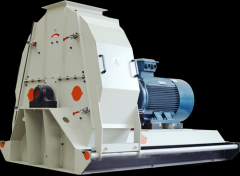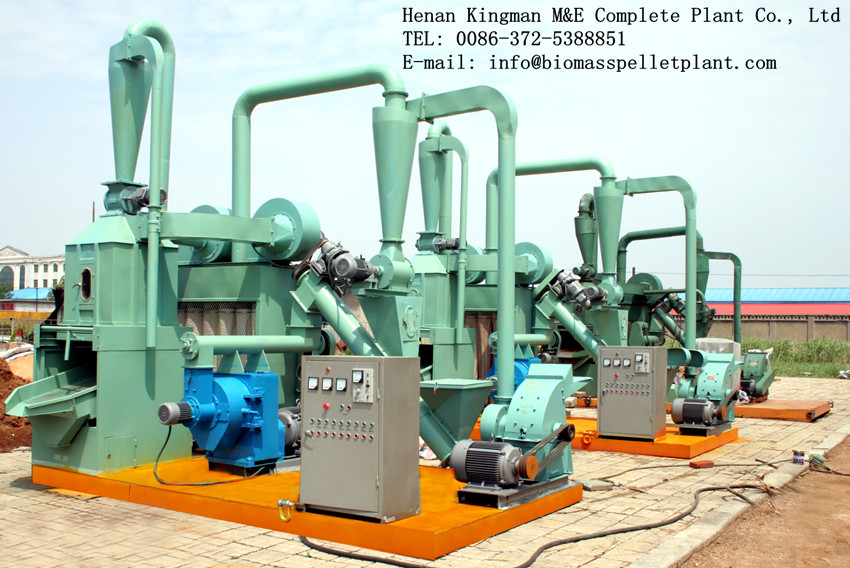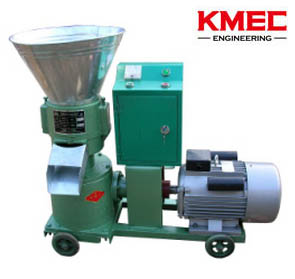Factors affecting the hardness of products of pellet mill
Pellets produced by pellet mill sometimes are in different hardness, then what factors may affect the hardness of pellets made by the pellet mill?

1. Crushing: the factor that plays a decisive role for pellet hardness in the crushing process is the size of raw materials. Generally speaking, the finer raw materials being crushed, the starch is easier to gelatinize in the process of conditioning and the bonding of the pellets is stronger. Thus, the pellets are not easily to broken and the hardness is greater.
2. Expansion of raw materials: through the extrusion and expansion treatment of raw materials, it can destroy the anti nutritional factors in raw materials, remove toxins in raw materials, kill bacteria and eliminate harmful substances to make the protein in raw materials denature and the starch fully gelatinized. The starch after gelatinization has obvious impact on the hardness of pellets. The greater the gelatinization of starch is, the harder the pellet would be. Other ways could be used to reduce pellet hardness.
3. Steam conditioning: steam conditioning is the key process of pellet feed processing technology, and the effect of conditioning has a direct impact on the internal structure and appearance of the pellets. Steam quality and conditioning time are the two important factors which will influence the effect of conditioning. The high-quality dry saturated steam can provide more heat to raise the temperature of the materials and gelatinize the starches. The longer the conditioning time is, the higher of gelatinization degree would be. Thus, the pellet structure after formation would be more dense, stable and harder. For general livestock and poultry, through regulating the amount of steam and keep the temperature of conditioning at 70~80℃ by changing the length of the conditioner, blade angle and the speed to control the conditioning time in 30 seconds or so. For the fish feed, generally a double layer or multilayer clamping sleeve is used to improve the conditioning temperature and prolong the time of conditioning, which is more favorable to improve the stability of fish pellets in water and the hardness of pellets is increased correspondingly.
4. Pelletizing mold: technology parameters such as the aperture and compression ratio of ring die in pellet mill can significantly affect pellet hardness. The hardness of pellets produced by ring dies of the same aperture and different compression ratio increases with the increase of the compression ratio. Pellets with suitable hardness can be made with the ring die of appropriate compression ratio. The size of pellet has a significant effect on the bearing capacity of pellet. For pellets of the same diameter without defects, if the length of the pellet is longer, the hardness is larger. In addition, the material of the ring die also has a certain influence on the appearance quality and hardness of the pellets. There is significant difference for pellet materials produced by ring die of ordinary steel and stainless steel.
There are many factors affecting the hardness of pellets made by the pellet mill. We can control the hardness of the product as long as we are able to master these skills. If you need pellet mills, feel free to contact us. We are looking forward to your presence.
News
- Small Pellet Machine Manufacturer-Kingman
- Application of Wood Pellets and Use of Biomass Pellets
- From Fossil Fuel into Biomass Pellet Fuel
- Biomass Pellet Making Machines Market
- Applying of pellet stoves for home use
- Highland pellets to build $130 million facility in arkansas
- How to deal with the blocked hammer mill
- How to Make Wood Pellets with Sawdust
- The government policy promotes the development of biomass fuel
- Market analysis of biomass pellet fuel
- Strategic positioning of renewable energy
- Biomass energy has pass through the pre assessment
- The key point of deep processing of biomass pellet
- Harbin is promoting the development of biomass machinery
- The development of biomass formation technology I
- The development of biomass formation technology II
- Biomass energy industry is now going full tilt in 2015
- Rapid increasing demand of sawdust pellet on the market
- Pellet fuel market in EU
- Chinese Biomass Energy Conference held in Beijing
- Future market development of straw pellet mill
- Peanut Shell Pellet Mill Makes High Quality Pellets
- The utilization of straw is only 5%, biomass energy needs our attention!
- Corn straw pellet machine relieves the tight supply of fuel energy
- Reasons for loose or not forming of biomass pellet mill





